Decision automation platforms revolutionize decision-making processes by automating the application of predefined business logic to data within operational workflows. These platforms evaluate specific conditions and trigger corresponding actions, optimizing and streamlining business decisions and processes. Decision automation platforms vary in capabilities, from basic rule-based systems to advanced solutions that leverage cutting-edge technologies for real-time decision-making.
Not all Decision Automation Platforms are Equal
Traditional Decision Automation Platforms centralize decision logic into a unified system, facilitating streamlined decision-making and policy management across diverse operations. These platforms excel in environments with complex and evolving decision logic, offering a framework for managing this complexity through easily updatable rules. The workflow typically involves defining, deploying, and managing a multitude of rules that govern various applications and systems within an organization.
In contrast, advanced Decision Automation Platforms, like Nected, introduce a dynamic and flexible approach to handling decision logic. They harness modern technologies such as machine learning to adapt and learn from data, enabling real-time decision-making without constant manual intervention. This technological evolution addresses many limitations inherent in traditional decision automation platforms:
- Complexity Management: Advanced Decision Automation Platforms simplify rule definition and maintenance through adaptive algorithms that adjust rules based on real-world outcomes and interactions.
- Customizability and JS Code: Modern platforms offer flexibility with customizable JavaScript code, allowing developers to tailor rules and workflows to specific business requirements.
- Performance and Scalability: Advanced platforms optimize performance using distributed computing and modern architectures to ensure scalability and responsiveness, even under high loads or with complex rule sets.
- Actions and Workflow Compatibility: Modern platforms seamlessly integrate with various actions and workflows, ensuring compatibility with existing systems and processes.
- User-Friendly Interfaces: Advanced platforms feature intuitive, non-technical interfaces that reduce the learning curve and reliance on specialized expertise.
- Data Integration: Modern platforms support data integration from multiple sources, enabling informed decision-making and efficient processes.
- Integration Methods: Advanced platforms offer diverse integration methods like APIs, event queues, and schedulers, ensuring compatibility with various technologies and platforms.
- On-Premise Access and Audit Trails: Modern platforms provide on-premise access control and audit trails for security and accountability.
- Data Fetch: Advanced platforms enable efficient data retrieval, reducing time and effort required for data processing.
- Rule Definition: Modern platforms simplify rule definition for more efficient and accurate decision-making.
- Sector Agnostic: Advanced platforms are versatile and applicable across multiple sectors, accommodating a wide range of use cases.
Before transitioning to an advanced Decision Automation Platform like Nected, organizations should evaluate their specific needs against these considerations. This includes understanding their operational processes, integration requirements, and the potential for scalability and flexibility offered by modern solutions. Additionally, assessing vendor support, community presence, compliance capabilities, and cost-benefit analysis is crucial.
While traditional decision automation platforms have been effective, the dynamic business landscape necessitates adaptable, efficient, and user-friendly solutions. Advanced platforms like Nected represent a shift towards managing decision logic more effectively, promising enhanced decision-making, operational efficiency, and alignment with future technological advancements. This transition not only overcomes the limitations of traditional systems but also paves the way for innovation and growth in decision automation.
Top 5 Decision Automation Platforms
Transitioning from our introduction, we present a curated list of the top 9 decision automation platforms. This selection showcases each platform's key features and applicability to various project requirements, empowering you to make informed decisions when choosing the optimal platform for your development endeavors.
1. Nected
Nected is one of the most powerful Decision Automation Platform designed to streamline complex decision-making processes, integrate data-driven logic, and automate workflows for maximum efficiency. By blending advanced rule management with comprehensive automation capabilities, Nected allows organizations to make faster, more accurate, and consistent decisions while reducing manual intervention and operational overhead. Its intuitive interface, robust integration capabilities, and scalability make it a top choice for businesses aiming to improve their decision-making efficiency.
Key Features:
- Automated Decision Logic: Nected’s platform allows users to automate complex decision logic through advanced rule-based engines, ensuring accurate, consistent, and data-driven decisions are made at every step of the workflow.
- Low-Code/No-Code Environment: With an intuitive user interface, Nected makes it easy for non-technical users to define, modify, and deploy decision automation without needing extensive coding skills, thereby accelerating the implementation process.
- Seamless Integration with Data Sources: Nected can connect with a wide variety of data sources, including APIs, databases, and external systems, to ensure real-time data integration and accurate decision automation.
- End-to-End Workflow Automation: Beyond decision automation, Nected provides comprehensive workflow automation capabilities, enabling businesses to create and automate processes from start to finish.
- Real-Time Adaptability: Nected allows businesses to adapt their decision automation processes in real-time, helping them stay responsive to evolving market conditions, customer needs, and internal requirements.
- Analytics and Performance Monitoring: The platform includes tools to monitor the performance of automated decisions, providing insights that can be used to optimize and refine processes continuously.
Pros:
- Nected ensures that decisions are consistently based on accurate, real-time data, reducing errors and improving reliability across business operations.
- By automating complex decision processes, Nected frees up valuable resources, reduces manual effort, and increases overall operational efficiency.
- Nected’s low-code/no-code platform enables both technical and non-technical users to automate decisions, fostering greater collaboration and innovation within teams.
- The platform’s real-time capabilities allow organizations to quickly adapt their decision automation processes to changing conditions, customer behaviors, or regulatory requirements.
- Nected offers both cloud-based and on-premise deployment configurations, enabling organizations to choose the option that best suits their security, compliance, and infrastructure needs.
Cons:
- While the platform is user-friendly, mastering more complex automation features and rule configurations may require training for new users.
- Organizations with heavily customized or outdated legacy systems may encounter integration challenges that require careful planning and customization.
Nected excels as a Decision Automation Platform by providing businesses with the tools they need to make fast, consistent, and data-driven decisions at scale. Its powerful rule engine, low-code/no-code interface, and seamless integration capabilities enable organizations to automate even the most complex decision-making processes with ease. With Nected, businesses can enhance operational efficiency, reduce manual workloads, and stay agile in the face of evolving market and customer demands. Whether automating routine decisions, optimizing customer interactions, or embedding decision logic into workflows, Nected delivers the power and flexibility needed to drive better outcomes and business success.
2. InRule
InRule stands out as a comprehensive decision automation platform (DAP) that enables organizations to streamline and automate decision-making processes. It is particularly effective in complex environments like finance, healthcare, insurance, and government sectors, where operational efficiency and accuracy are paramount. InRule bridges the gap between business and IT teams, facilitating rapid implementation and updates to decision logic without requiring extensive technical knowledge.
Key Features:
- User-Friendly Authoring Environment: Allows business users to independently create, test, and manage decision rules, minimizing reliance on IT staff.
- Robust Versioning and Governance: Tracks changes meticulously and ensures that only approved rules are implemented, enhancing reliability and compliance.
- Flexible Integration Options: Supports seamless integration with existing IT infrastructure through on-premise, cloud, and hybrid deployment models.
- Advanced Decision Logic: Accommodates complex decision-making scenarios, including predictive analytics, by integrating machine learning models and external data sources.
- Comprehensive Analytics and Reporting: Offers detailed insights into rule performance and decision impacts, supporting continuous improvement of decision strategies.
Pros:
- Agility in Regulatory Compliance: Quickly adapts to changes in regulations or market conditions by allowing immediate updates to business rules.
- Cost-Efficiency in Rule Management: Reduces the complexity and expense associated with business logic management by empowering non-technical users to contribute to the rule development process.
- Consistent and Accurate Decisions: Enhances decision accuracy and consistency by centralizing rule management and removing hard-coded logic from applications.
- Scalable and Adaptable: Scales effectively to support various business sizes and adapts to changing technical conditions.
- Extensive Support Network: Provides robust support and a detailed knowledge base to ensure effective platform implementation and operation.
Cons:
- Steep Initial Learning Curve: Business users new to decision logic may find the platform challenging initially.
- Variable Integration Effort: Integration complexity and customization requirements can vary based on the existing IT environment and specific business needs.
- Consideration of Costs: The licensing and support cost structure might be prohibitive for smaller organizations or limited-budget projects.
- Expertise for Advanced Uses: Integrating AI and complex data analytics may require additional skills to maximize the platform’s capabilities.
- Vendor Lock-In Risks: Reliance on a vendor-specific solution necessitates consideration of long-term strategic alignment with technology goals.
Nected vs. InRule
| Feature |
InRule |
Nected |
| Cloud Integration Capabilities |
✅ |
✅ |
| Ease of Use for Non-Developers |
❌ |
✅ |
| No-Code Workflow Creation |
Limited |
✅ |
| Real-Time Monitoring and Alerts |
✅ |
✅ |
| Custom Code Integration |
✅ |
✅ |
| Dedicated Support |
❌ |
✅ |
| Comprehensive API Access |
Limited |
✅ |
| Scalability |
✅ |
✅ |
| Cost-Effectiveness |
❌ |
✅ |
| System Integration Breadth |
✅ |
✅ |
InRule's robust feature set and focus on enabling non-technical users to manage and automate decisions make it an attractive option for organizations keen on leveraging advanced DAP technologies to optimize business outcomes. Its comprehensive integration capabilities and user-centric design position it as a top choice in the decision automation platform landscape.
3. Zapier
Zapier is a renowned low-code, no-code platform that dramatically simplifies the automation of tasks across web applications. It serves as an essential connector among over 3,000 applications, allowing users to create intuitive workflows that automate time-consuming tasks without any coding expertise. This platform is designed to enhance productivity and streamline operations by facilitating seamless data flow and task automation across a vast software ecosystem.
Key Features:
- Intuitive Workflow Creation: Enables easy setup of custom workflows by connecting apps and defining specific triggers and actions.
- Vast Integration Capability: Connects over 3,000 web applications, covering an extensive range of use cases.
- Multi-Step Zaps: Supports the creation of complex, multi-step workflows with various conditions.
- Templates: Offers numerous pre-built templates to expedite the workflow setup process.
- Task History: Maintains detailed logs of all executed tasks for effective monitoring and troubleshooting.
Pros:
- Ease of Use: Zapier’s user-friendly interface allows even non-technical users to automate tasks effortlessly.
- Extensive App Ecosystem: With its broad library of integrations, Zapier caters to nearly every conceivable automation need.
- Customizable Workflows: Provides flexibility in crafting tailored automation solutions to meet specific business requirements.
Cons:
- Cost: The platform’s free tier is limited, and more advanced features and higher task volumes require expensive subscriptions.
- Complexity in Large-Scale Implementations: Setting up and managing extensive, intricate workflows can become cumbersome.
Zapier vs. Nected: Comparative Analysis
| Feature |
Zapier |
Nected |
| No-code Workflow Creation |
✅ |
✅ |
| Integration Capability |
✅ |
✅ |
| Multi-Step Workflows |
✅ |
✅ |
| Pre-Built Templates |
✅ |
✅ |
| Task History and Monitoring |
✅ |
✅ |
| Cost-Effectiveness |
❌ |
✅ |
| Custom Code Integration |
❌ |
✅ |
| Dedicated Support |
❌ |
✅ |
| User-Friendly Interface for Beginners |
✅ |
✅ |
| Tailored Solutions for SMEs |
❌ |
✅ |
Zapier excels in providing an extensive range of integrations and a user-friendly platform, making it ideal for automating workflows across multiple applications without the need for coding skills. However, when evaluating overall cost, support, and customization, Nected proves to be a more cost-effective and supportive solution, particularly for businesses seeking personalized automation solutions. While Zapier offers a wide application ecosystem, Nected distinguishes itself with deeper, more tailored integration options, dedicated support, and custom solutions, particularly benefiting small and medium-sized enterprises (SMEs) looking for value and specific service adaptations.
4. IBM Operational Decision Manager
IBM Operational Decision Manager (ODM) is a sophisticated decision management platform designed to empower organizations to automate and govern decision logic effectively across their operations and applications. ODM excels in environments that demand high scalability and integration, making it ideal for enterprises that aim to improve decision accuracy and responsiveness to market changes.
Key Features:
- Centralized Decision Services Repository: Ensures consistent decision management and governance across all business areas.
- Intuitive User Interface: Enables business users to manage and update decision logic without requiring extensive technical knowledge.
- Advanced Decision Modeling: Utilizes Decision Model and Notation (DMN) for clear and manageable decision processes.
- Robust Simulation and Testing Tools: Allows businesses to test the impacts of rule changes thoroughly before implementation.
- Flexible Integration: Seamlessly integrates with existing enterprise IT setups, supporting both on-premise and cloud deployments.
Pros:
- Rapid Adaptability: Facilitates quick updates to decision logic by business users, enhancing agility in response to changing conditions.
- Reduced IT Dependency: Accelerates decision-making processes by empowering non-technical staff to handle updates.
- Enhanced Accuracy and Consistency: Ensures that decisions are accurate and consistent across various applications and processes.
- Strong Compliance and Auditability: Offers comprehensive tracking of decision changes, improving compliance and audit capabilities.
- Collaborative Business-IT Alignment: Promotes effective collaboration between business and IT teams to ensure that decision logic meets both business needs and technical requirements.
Cons:
- Steep Learning Curve: The platform's comprehensive capabilities may be challenging for new users to master.
- Higher Cost Structure: May be cost-prohibitive for smaller organizations or those with limited budgetary resources.
- Complex Implementation: Requires careful planning and may need support from IBM professionals or certified partners.
- Potentially Excessive Functionality: May offer more features than necessary for projects with simpler rule processing needs.
- Ongoing Training Requirements: Demands continuous training for staff to stay updated on the latest functionalities and best practices.
Nected vs. IBM Operational Decision Manager
| Feature |
IBM ODM |
Nected |
| Cloud Integration Capabilities |
✅ |
✅ |
| Ease of Use for Non-Developers |
❌ |
✅ |
| No-Code Workflow Creation |
☑️ |
✅ |
| Scalability |
✅ |
✅ |
| Real-Time Monitoring and Alerts |
✅ |
✅ |
| Custom Code Integration |
☑️ |
✅ |
| Comprehensive API Access |
✅ |
✅ |
| Dedicated Support |
❌ |
✅ |
| Cost-Effectiveness |
❌ |
✅ |
| Pre-Built Templates for Rapid Deployment |
❌ |
✅ |
IBM Operational Decision Manager delivers a powerful solution for large enterprises looking to optimize their decision-making capabilities through advanced automation. The platform's emphasis on enabling non-technical users to contribute to decision logic and its robust governance tools make it a prime choice for organizations seeking to maintain operational efficiency and competitive edge through effective decision management.
5. FICO Decision Management Suite
FICO Decision Management Suite is an advanced platform designed to enhance the precision, consistency, and agility of business decisions across multiple sectors. The suite leverages analytics, predictive modeling, and decision optimization technologies to empower organizations to make better-informed decisions rapidly and at scale.
Key Features:
- Advanced Analytics: Incorporates sophisticated predictive models and machine learning algorithms to enhance decision accuracy.
- Real-Time Decisioning: Allows for the implementation of decision strategies that can respond in real-time to customer interactions.
- Strategy Design Tools: Offers comprehensive tools for creating, testing, and deploying decision strategies, ensuring they align with business goals.
- Customizable Rules Management: Features a robust rules management system that enables users to tailor decision logic to specific business needs.
- Integration Capabilities: Seamlessly integrates with existing enterprise systems to maintain continuity and maximize operational efficiency.
Pros:
- Enhanced Decision Accuracy: Utilizes state-of-the-art analytics to ensure decisions are both precise and consistent.
- Increased Operational Agility: Allows organizations to quickly adapt decision strategies to changing market conditions.
- Scalability: Supports decision-making processes at scale, accommodating the needs of large enterprises.
- Comprehensive Compliance Features: Strengthens compliance and risk management with detailed audit trails and reporting capabilities.
- Cross-Platform Integration: Ensures smooth integration across various platforms and systems, enhancing workflow efficiency.
Cons:
- Complexity of Tools: The depth and breadth of tools can be overwhelming for users without analytical expertise.
- Higher Cost of Ownership: The comprehensive features and capabilities come at a higher price point, which may be prohibitive for smaller organizations.
- Resource-Intensive Implementation: Requires significant resources and expertise for setup and ongoing management.
- Training Requirements: Demands substantial training for users to fully leverage the suite’s capabilities.
- Dependence on Technical Support: Users often need ongoing technical support to address complex issues or customize applications.
Nected vs. FICO Decision Management Suite
| Feature |
FICO Decision Management Suite |
Nected |
| Cloud Integration Capabilities |
✅ |
✅ |
| Ease of Use for Non-Developers |
❌ |
✅ |
| No-Code Workflow Creation |
☑️ |
✅ |
| Scalability |
✅ |
✅ |
| Real-Time Monitoring and Alerts |
✅ |
✅ |
| Custom Code Integration |
☑️ |
✅ |
| Comprehensive API Access |
✅ |
✅ |
| Dedicated Support |
❌ |
✅ |
| Cost-Effectiveness |
❌ |
✅ |
| Pre-Built Templates for Rapid Deployment |
❌ |
✅ |
FICO Decision Management Suite provides a powerful, analytics-driven approach to optimizing enterprise decisions. It is ideal for large organizations that require complex decision-making capabilities and can invest the necessary resources to implement and maintain such a system. The suite's emphasis on predictive analytics and real-time decisioning makes it a valuable tool for businesses aiming to enhance operational efficiency and decision accuracy at a large scale.
How to Choose the Best Decision Automation Platform?
Selecting the right Decision Automation Platform (DAP) for your organization is crucial to ensuring that your decision-making processes are optimized, integrated seamlessly with your current systems, and flexible enough to adapt to future demands. Here’s how to choose the best DAP:
- Deployment Flexibility: Evaluate the platform’s deployment options, including cloud, on-premise, and hybrid models. Platforms offering low-code or no-code deployment methods can simplify implementation, making it accessible even without deep technical expertise.
- Integration Capabilities: Assess the ease with which the platform can integrate with existing systems and data sources. A good DAP should offer robust APIs and pre-built connectors for seamless integration with a wide array of applications and services.
- Scalability: Ensure that the platform can scale according to your business needs. Look for a DAP that can handle increasing volumes of data and complexity without degrading performance.
- User Interface: The platform should have an intuitive, user-friendly interface that allows users of all technical levels to create, test, and deploy decision automation workflows effectively.
- Advanced Analytics and Machine Learning: Choose a platform that incorporates advanced analytics, machine learning algorithms, and real-time decision capabilities to enhance the accuracy and efficiency of automated decisions.
- Cost-Effectiveness: Consider the total cost of ownership, including licensing fees, implementation costs, and any required ongoing maintenance or support fees. Ensure the pricing model aligns with your budget and the expected ROI from automating decisions.
- Vendor Reputation and Support: Research the vendor’s track record and stability in the market. A reputable vendor should offer comprehensive support, including training, customer service, and technical assistance, to ensure you maximize the value of their platform.
- Regulatory Compliance and Security: Verify that the platform complies with relevant industry regulations and standards, especially concerning data security and privacy.
- Customization and Flexibility: The platform should allow for customization of workflows, decision logic, and integration with other tools, enabling you to tailor the solution to fit specific business processes.
- Customer Reviews and Case Studies: Investigate what current users say about the platform to gauge satisfaction levels and common issues. User reviews and case studies can provide real-world insights into the platform’s performance and reliability.
By carefully considering these factors, you can select a decision automation platform that not only meets your current needs but also supports your organization’s growth and adapts to changing technological and market conditions. This approach ensures that your investment enhances decision-making processes, driving better business outcomes.
Rating of Discussed Decision Automation Platforms
To effectively evaluate these decision automation platforms, we assess each tool based on six critical parameters: Integration Capabilities, Customization Level, Community Support, Performance, Ease of Use, and Documentation. These criteria help gauge each platform's ability to automate complex decision-making processes efficiently and integrate seamlessly with other systems.
| Platform |
Integration Capabilities |
Customization Level |
Community Support |
Performance |
Ease of Use |
Documentation |
| InRule |
8 |
8 |
7 |
7 |
7 |
7 |
| Nected |
9 |
9 |
8.5 |
9 |
9 |
9 |
| Zapier |
9 |
7 |
8 |
9 |
9 |
8 |
| DecisionRules |
7 |
8 |
7 |
8 |
8 |
7 |
| IBM Operational Decision Manager |
9 |
9 |
8 |
9 |
8 |
9 |
| FICO Decision Management Suite |
9 |
9 |
7 |
9 |
7 |
8 |
When selecting a decision automation platform, consider the specific needs of your organization to align with the platform’s strengths. For businesses requiring comprehensive and user-friendly solutions with robust support and ease of integration, Nected provides an excellent fit, offering top ratings in nearly every category. It's particularly effective for those looking for an all-encompassing platform that simplifies complex decision-making processes.
For organizations with intricate and regulatory-heavy decision processes, such as those in finance or insurance, IBM Operational Decision Manager and FICO Decision Management Suite are standout choices due to their strong performance and high customization capabilities. These platforms are tailored to manage complex scenarios and scale according to business growth. Meanwhile, Zapier serves well for businesses prioritizing seamless integration across various applications, facilitating quick and effective decision automation without extensive technical overhead. The choice of platform should thus not only cater to the current operational demands but also adapt to evolving business needs, ensuring scalability and flexibility.
In summary, the selection of a decision automation platform should consider factors such as the complexity of the decision processes, the need for integration with existing systems, the scale of operations, and the availability of technical resources. Choosing a platform that aligns well with your organization's current and future needs will ensure that decision processes are not only automated but optimized for better performance and scalability.
Conclusion
Choosing the right decision automation platform is a strategic decision that can significantly impact the efficiency and effectiveness of your organization's operational and decision-making processes. The right platform will not only streamline workflows but also empower your team to make informed, data-driven decisions swiftly and confidently.
In your selection process, prioritize platforms that align with your organizational goals, integrate effortlessly with your existing systems, and offer scalability to grow with your needs. Consider platforms that provide intuitive, user-friendly interfaces and robust support to ensure a smooth transition and ongoing success.
By conducting thorough research and weighing factors such as integration capabilities, cost, scalability, and vendor reputation, you can identify a decision automation platform that not only fits your current requirements but also positions your organization for future success. Remember, the goal is to enhance your decision-making capacity in a way that is both sustainable and adaptable, ensuring long-term competitiveness and efficiency in an ever-evolving business landscape.
Ultimately, the best decision automation platform is one that helps you harness the full potential of your data, streamline complex processes, and adapt to market changes with agility. With the right tools at your disposal, your organization can achieve enhanced operational efficiency and make better decisions that drive success.
FAQs:
Q1. Can decision automation platforms handle highly specialized industry-specific decision-making processes?
Yes, decision automation platforms are designed to be adaptable and configurable to cater to a wide range of industries and their unique decision-making requirements. By leveraging customizable rules and integration capabilities, these platforms can effectively streamline and automate even the most specialized decision processes within industries like healthcare, finance, and manufacturing.
Q2. How do decision automation platforms ensure data privacy and security when automating critical decisions?
Decision automation platforms prioritize data security and privacy by implementing robust encryption protocols, access controls, and compliance measures. These platforms often offer features like audit trails, role-based access, and data encryption to safeguard sensitive information and ensure regulatory compliance while automating critical decisions.
Q3. Can decision automation platforms adapt to changing regulations and compliance requirements in real-time?
Yes, decision automation platforms are equipped to adapt to evolving regulations and compliance standards by allowing for quick updates to decision rules and logic. Through features like version control, governance capabilities, and real-time monitoring, these platforms enable organizations to stay compliant and make necessary adjustments promptly as regulations change.
Q4. How do decision automation platforms handle exceptions or edge cases in decision-making processes?
Decision automation platforms are designed to handle exceptions and edge cases through configurable rules and decision trees. By allowing for the creation of specific rules for exceptional scenarios, these platforms ensure that even complex decision-making processes can be automated effectively while addressing outliers or unique situations that may arise.
Q5. What level of technical expertise is required to implement and maintain a decision automation platform within an organization?
Decision automation platforms are designed to be user-friendly and accessible to a wide range of users, including business analysts and non-technical stakeholders. While some technical knowledge may be beneficial for advanced configurations, these platforms typically offer intuitive interfaces and support resources to enable easy implementation and maintenance without deep technical expertise.




.png)
.svg)
.webp)

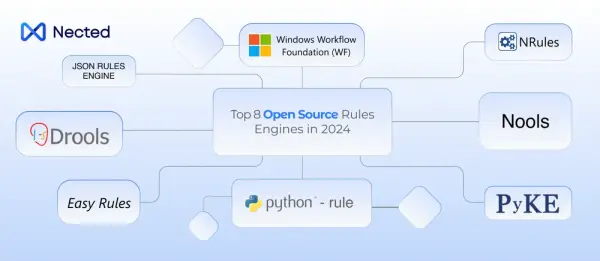




.svg)


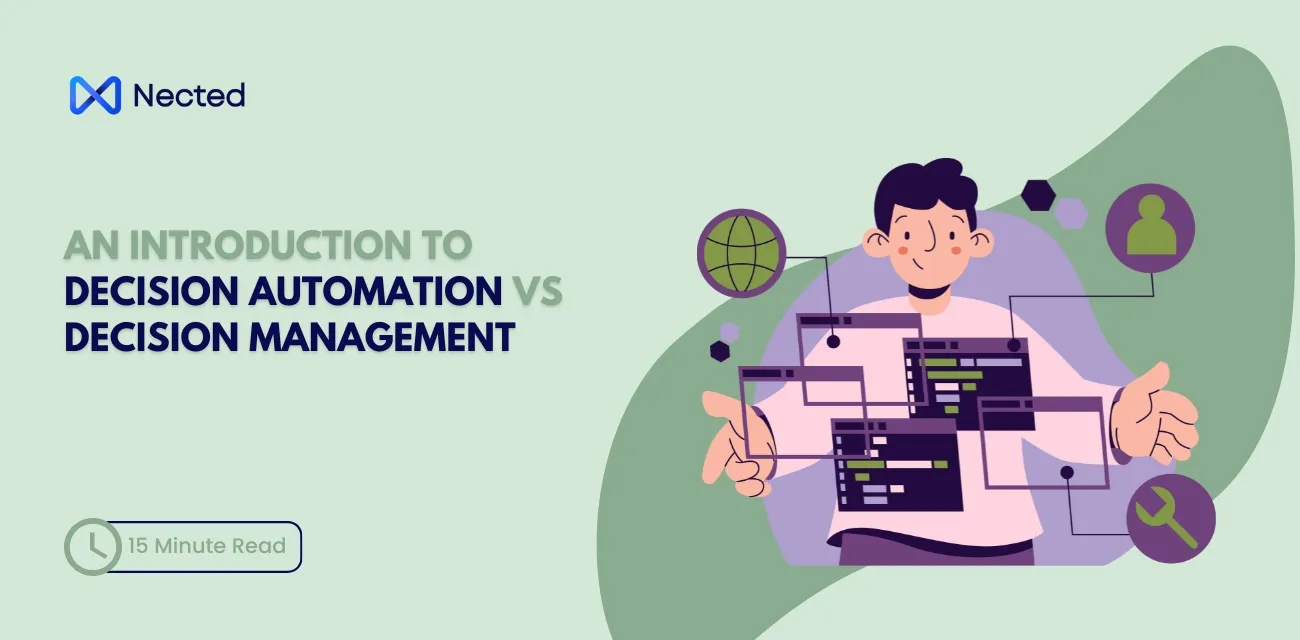


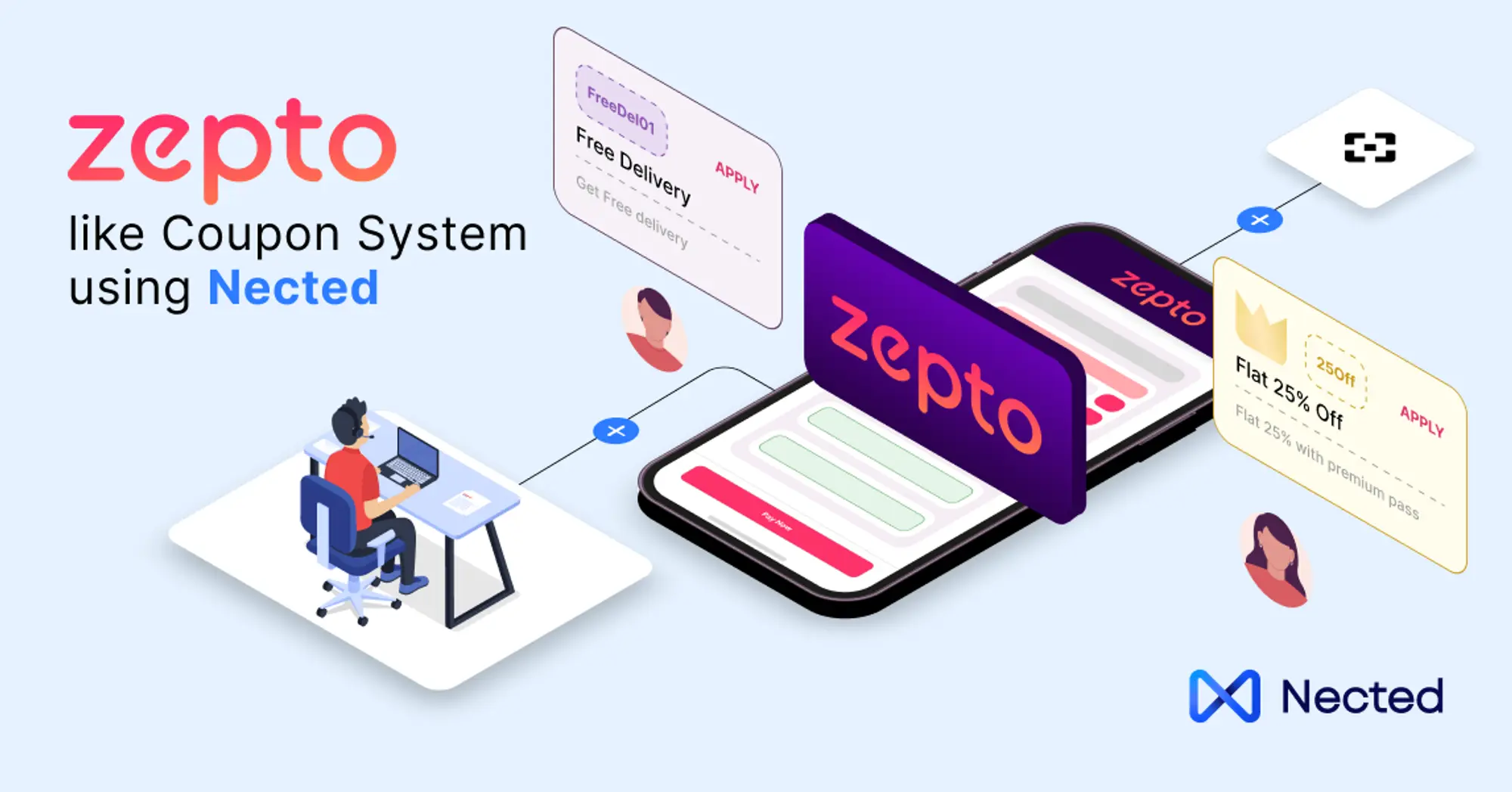
.webp)
.webp)

.webp)


.svg)





.webp)
.svg.webp)





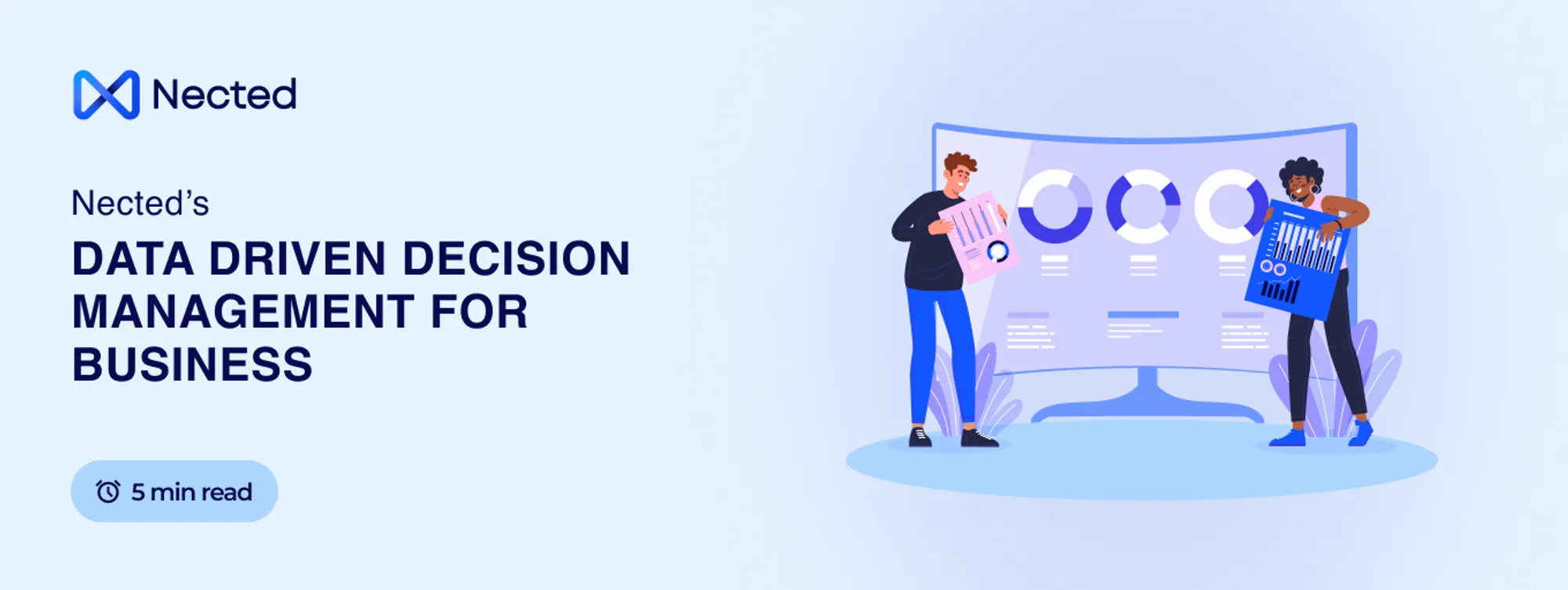

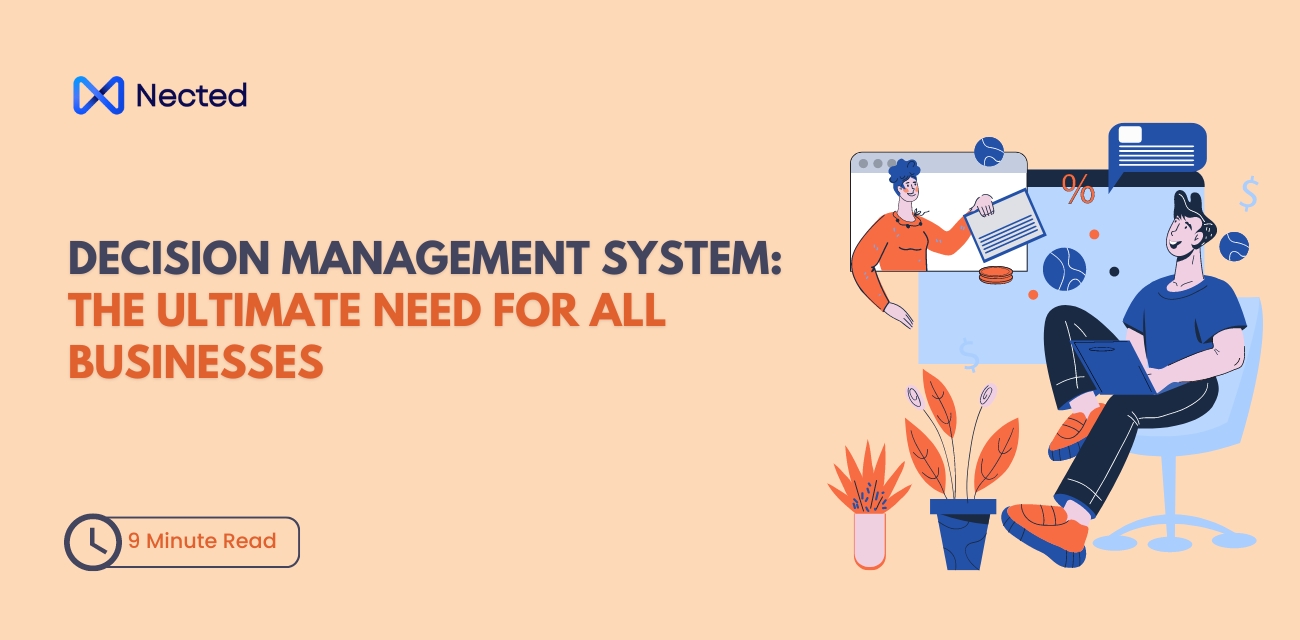
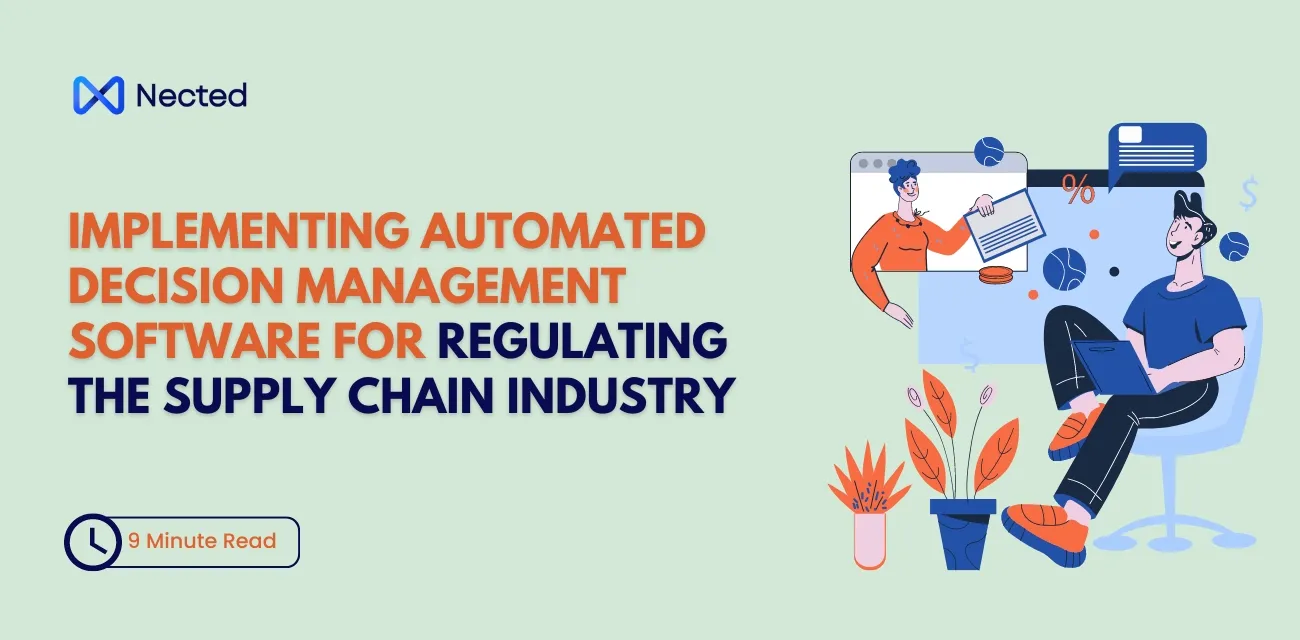
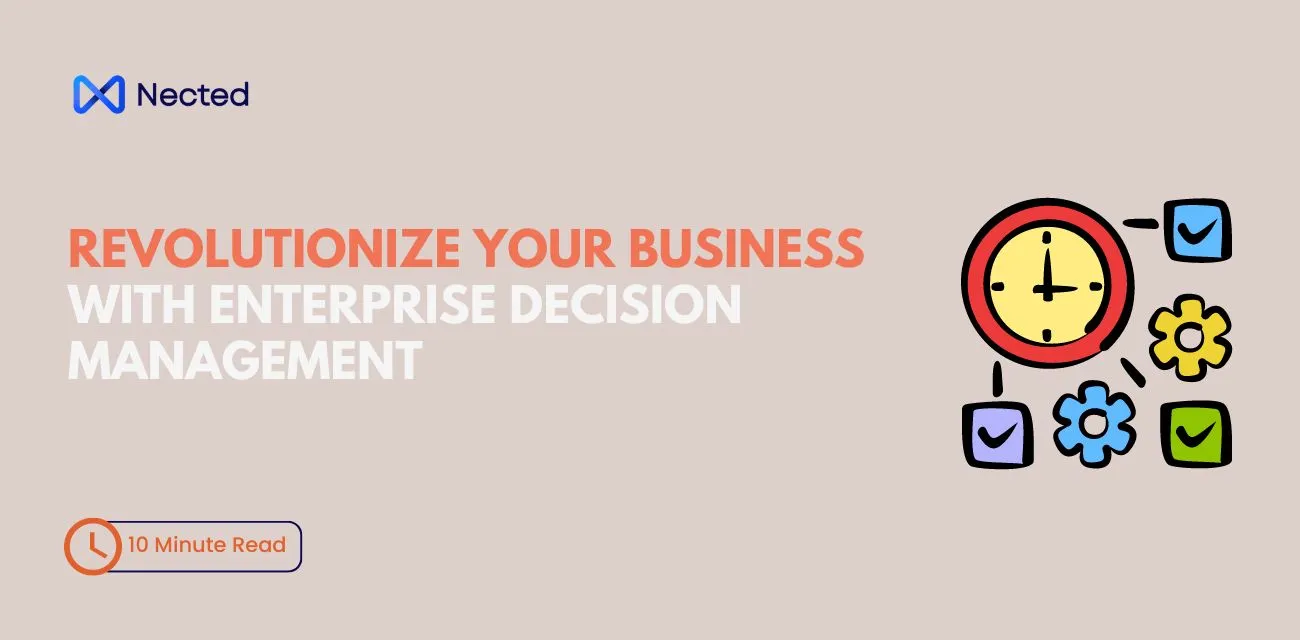
.webp)


%20m.webp)
.webp)
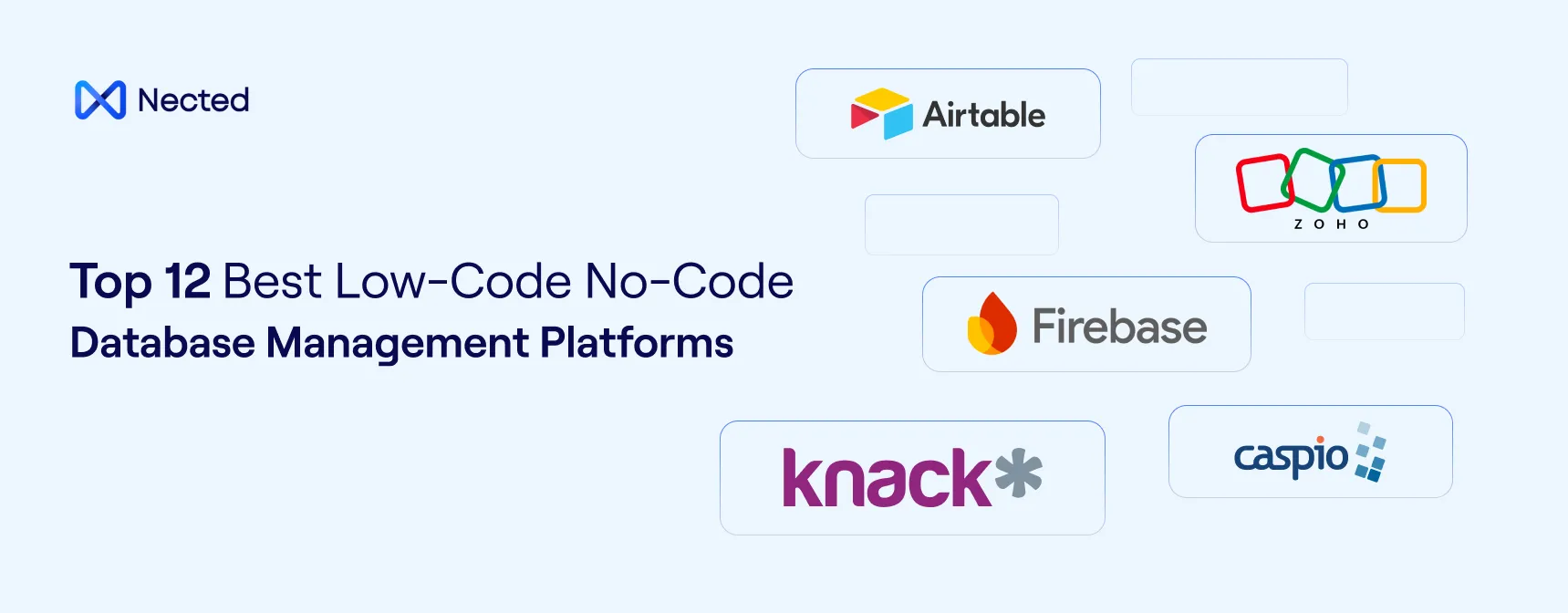

.webp)
.webp)






%20(1).webp)
